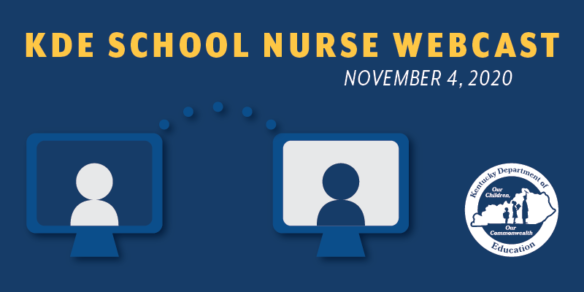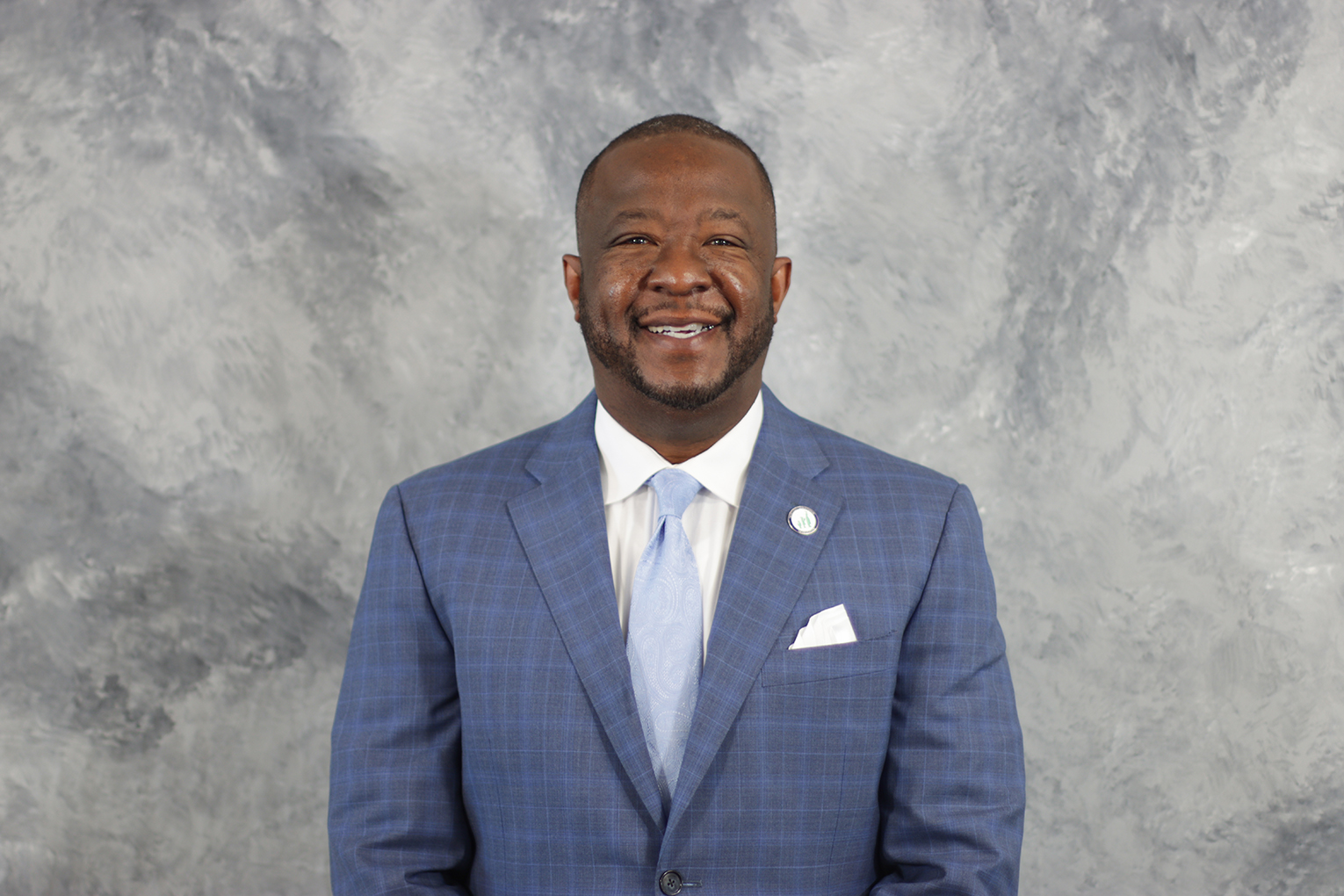
- Contact tracing resources, though tripled in the last few months, are already under strain as COVID-19 case numbers rise.
- Schools need to keep detailed records of student and staff contacts to help contact tracers identify possible exposures when someone is diagnosed with COVID-19.
By Jim Gaines
jim.gaines@education.ky.gov
Cooperation between schools and local health departments is vital for successfully tracking people who have been exposed to COVID-19, Kentucky health officials said Nov. 4 during a webcast for school nurses on contact tracing and quarantining.
Dr. Connie White, deputy commissioner of the Kentucky Department for Public Health (DPH), has talked repeatedly to the state’s superintendents about how local health departments should handle contact tracing, she said during the joint presentation by DPH and the Kentucky Department of Education (KDE). But now Kentucky is “in a different place” with COVID-19 prevalence than during the summer, White said.
The state’s positive test rate climbed to 6.3% Nov. 4, as weekly case averages hit records.
Health officials recorded 1,000 new cases per week in the spring and summer, but are now seeing close to twice that each day, White said. With the pandemic continuing into the foreseeable future, any way schools and health departments can help each other trace people’s exposure is needed for success, she said.
“It is an overwhelming, all-encompassing process to do this work,” White said.
Contact Tracing in Kentucky
Contact tracing has existed for years as a public health tool, but previously didn’t attract much notice outside of the health care industry, said Mark Carter, executive adviser to the Cabinet for Health and Family Services.
“COVID changed that dramatically,” he said.
Once someone tests positive for COVID-19, a clinician asks them for a list of people they’ve been in contact with during their potentially infectious period, Carter said.
That information is given to a contact tracer, who seeks specific details. Anyone who had extensive contact with the infected person is advised to quarantine.
People so advised also hear from a social support coordinator who can try to help fill daily needs during quarantine, Carter said.
“Those could be things like childcare, access to medicines, groceries, that kind of thing,” he said.
The statewide contact tracing technology system began deploying in May and it’s now active in 60 of the state’s 61 health districts, Carter said. The last, in Lexington, should be active next week.
About 430 people were doing contact tracing when Kentucky saw its first COVID-19 cases; now there are almost 1,400, with the effort funded by the federal Coronavirus Aid, Relief and Economic Security (CARES) Act, he said.
Contact tracing is only effective in concert with other public health measures, such as face masks and social distancing, he said. Combining efforts to slow COVID-19’s spread is essential, because current caseloads already are straining contact tracing resources.
If a school knows a student or staff member has tested positive, its administrators don’t need to wait for the local health department before isolating that person and suggesting quarantine to their close contacts, Carter said. He plans to tell the same thing to businesses and other public entities.
“The escalation of the disease over the last four to six weeks has been quite dramatic. We’re not alone with that here in the Commonwealth; it’s happening all across the country,” Carter said.
District Reports
Health department and school personnel from four districts spoke on how contact tracing and collaboration are working for them locally. All praised the cooperation thus far between school and health districts.
In Woodford County, school and health officials were in constant contact over the summer, working out how to get children back in school, said Cassie Prather, public health director for the Woodford County Health Department.
The school district established protocols for seating charts, isolation, keeping attendance and listing parental contacts, Woodford County Middle School nurse Robin Reed said.
That groundwork made the job of Robin Miller, the health department’s disease investigator, much easier. When one positive case turned up on a Friday afternoon, Miller said, the school collected information while the health department started its own work.
“By the time that my interview (with the student) was conducted, they had all the information I needed to identify the contacts,” she said. Miller talked to 29 families that night and arranged for quarantining all those students.
Bracken County Health Department Director Tony Cox has been working with his local schools for 25 years, so he had a basis of collaboration to build on. That made the addition of contact tracing almost seamless, he said.
School nurses gather all the needed information and make staff available for contact tracing interviews, Cox said. The health department notifies everyone involved, tracks cases and sends quarantine notices to the affected schools.
Five public school districts are within the North Central Health Department’s jurisdiction, with Shelby County Public Schools (SCPS) as the largest.
Health officials were asked to join the summer’s task force on reopening local schools, said Stephanie Lokits, North Central Health Department director of nursing.
Traci Earley, district health coordinator for SCPS, gathers the relevant information when a parent or the health department says a student or staff member has been exposed to COVID-19. She tells parents it’s essential for them to answer the health department’s contact tracing call.
This is the first year Shelby County has had a nurse in every school building, and the contact tracing done so far would not be possible without that, Earley said.
Christian County has more than 11,000 students in its public schools, three private schools and a school at Fort Campbell, said Kayla Bebout, public health director for the Christian County Health Department.
The Christian County School District has created forms for students and staff who test positive, which contain all essential information for contact tracing, Bebout said. That is vital for health officials who may need to make hundreds of phone calls to contacts on a dozen or so cases, she said.
It also helps that the school district sends all information to one point of contact, who then conveys it to the health department, Bebout said.
Quarantine Guidance
Quarantining people exposed to COVID-19 is one tool to reduce transmission, along with hand washing, face masks and social distancing, said Doug Thoroughman, a career epidemiology field officer for the Centers for Disease Control & Prevention and Kentucky’s acting state epidemiologist.
It removes potentially infected people, before they start to show symptoms, from contact with others. Quarantine is used for people who have been in close or lengthy contact with someone who tested positive for COVID-19, he said.
That’s distinct from isolation, which removes a confirmed case from contact with others, Thoroughman said.
Quarantine for COVID-19 exposure is 14 days, within which most people who catch the disease will become infectious, he said. Mask-wearing reduces the likelihood of infection but doesn’t eliminate the need for quarantine.
Some people may not test positive for the disease until near the end of quarantine, at which point a 10-day isolation period would begin, Thoroughman said.
For anyone living in the same household as a positive case, their 14-day quarantine would begin at the end of the infected person’s 10-day isolation, he said.
Local health departments are the final authority on whether quarantine is warranted, Thoroughman said. He urged people to support health officials and their decisions.
Though COVID-19 cases are surging in communities statewide, so far adherence to public health measures has been successful in preventing parallel outbreaks in schools, said KDE Chief Communications Officer Toni Konz Tatman.
She read out a recent statement from Commissioner of Education Jason E. Glass urging school districts to discuss closing schools to in-person learning when their community’s cases spike.
MORE INFO …
- Nov. 4 KDE School Nurse Webcast on contact tracing
- KDE’s COVID-19 webpage
- KDE’s COVID-19 Reopening Guidance webpage
- Kentucky COVID-19 Hotline (800) 722-5725



Leave A Comment